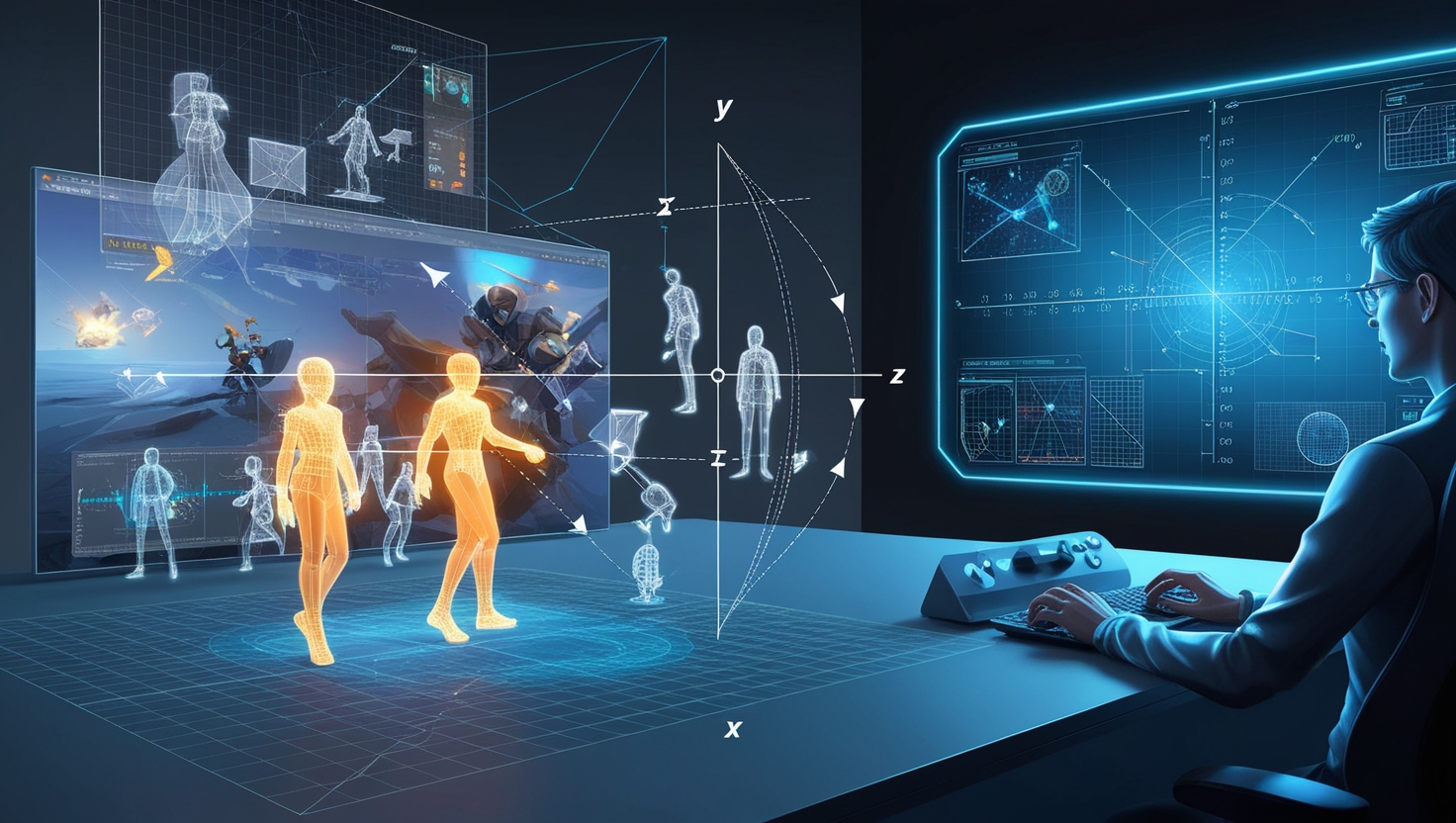
Fans of a stunning 2D platformer, a captivating 3D world, or a smooth real-time strategy game are often surprised to learn that behind all that creative magic lies the world of mathematics, specifically linear algebra.
This branch of mathematics may seem intimidating, but it’s one of the unsung heroes of modern game development. Without it, we wouldn’t have realistic motion, accurate collision detection, believable physics, or even 3D rendering.
Let’s take a closer look and explore how linear algebra makes your game work, and why understanding it (even a little bit) can help you make smarter decisions as a game designer.
🧮 What is Linear Algebra?
Vectors, matrices, and linear transformations are all topics in the mathematical field of linear algebra. In the context of game development, it facilitates the description and manipulation of spatial motion, scale, rotation, location, and direction.
In a nutshell, it’s how we direct a character’s movement, spin the camera, or control a projectile’s trajectory from point A to point B.
🎮 Where Linear Algebra Is Used in Game Development
The foundation of the games we make daily is linear algebra.
1. 3D Graphics and Rendering
Every animation, texture, and model in 3D games is in a 3D coordinate system. The game engine uses linear algebra to instruct it on:
- Rotate models correctly
- Project 3D scenes onto a 2D screen (like your phone or monitor)
- Transform objects from local space (relative to itself) to world space (relative to everything else)
We use matrices to process all these transformations in real-time, often thousands of times per second.
2. Camera Movement and Perspective
Cameras in games don’t just stay still. They follow the player, rotate, zoom in and out, and sometimes simulate a first-person perspective. To maintain the camera’s alignment, smoothness, and position, this motion is managed by matrix operations and vector algebra.
For example, if your game features a top-down view that follows a character, linear algebra allows us to dynamically calculate the exact displacement and orientation, no matter how the player moves.
3. Physics and Motion
Examples of how physics in games depends on vectors and forces—all controlled by linear algebra—include a bouncing ball, a car negotiating a corner, or a rag doll character collapsing realistically.
- Vectors describe velocity, acceleration, and direction.
- Scalar products help us determine when objects are pointing at each other (useful in AI and combat).
- Calculating perpendicular vectors through cross products is useful for modelling torque or orientation.
4. Lighting and Shading
Using vector mathematics, realistic lighting in contemporary games mimics the way light falls on a surface. Normals (vectors perpendicular to surfaces) determine how bright or dark an object appears. Linear algebra-based shading algorithms represent how materials reflect light based on their orientation.
This gives objects a polished, realistic look that players enjoy.
5. Collision Detection
When two objects collide, the game engine uses vectors and geometric calculations based on linear algebra to determine whether their boundaries intersect.
This includes:
- In fighting video games
- Collisions between terrain in racing games
- Effects of projectiles on shooters
Realistic and fluid gameplay is ensured by effective collision detection that does not affect performance.
🛠️ Why it matters for gaming clients
Calculating the inverse of a matrix is not necessary if you work with a game production studio like Melior Games, but it is useful to know why the maths is so crucial.
Here’s why linear algebra is important for your project:
- It ensures smooth and natural animation and gameplay
- It offers performance that is both scalable and optimised across devices.
- It enables complex features like realistic lighting, camera movement, and physics
- It provides our creators with all the resources they need to make cutting-edge, captivating games.
To put it simply, linear algebra provides us with the technological framework to make your game concept a reality in 2D, 3D, AR, or VR.
🤝 Building a game on a solid foundation
We at Melior Games blend quantitative accuracy with artistic vision. Our developers use tools like Unity and Unreal Engine, which work on linear algebra, to bring your concepts to life.
Therefore, keep in mind that it’s not magic the next time you witness a character moving fluidly across the environment or a laser beam reflecting off of something. It’s math. Let’s build a game together that’s not only fun but also fundamentally sound.
Want to learn more about the technologies that underpin games? Get in touch with Melior Games, and we’ll be pleased to guide you through each step.




